TechRadar Verdict
While the MU7000 Series isn't Samsung’s most glamorous TV of 2017, it effortlessly combines an efficient smart TV system with arguably the best all-round picture quality for a price that most folks can afford.
Pros
- +
Bright, colorful HDR pictures
- +
Attractive space-saving design
- +
Good value
- +
Easy to use
Cons
- -
UK model's awkward legs
- -
40/49-inch models aren't 10-bit
- -
No Dolby Vision support
- -
Inconsistent black levels
Why you can trust TechRadar
The Samsung UN49MU6400 (known as the UE49MU7000T in the UK) isn’t the company’s most glamorous TV of 2017. It doesn’t use the South Korean manufacturer's new QLED technology to boost the brightness and colour of its pictures, and its backlight system doesn’t support local dimming.
What it does do, though, is combine an efficient smart TV system with arguably the best all-round picture quality – especially with high dynamic range sources – you can currently buy at $699 (£999).
Design

Screen sizes available: 40, 49, 55, 65-inches (75 and 82-inches also available in the UK and Australia)
Tuner: Freeview HD
4K: Yes
HDR: Yes (HDR10, HLG)
Panel technology: LCD
Smart TV: Yes, Eden 2.0
Curved: No
Dimensions: 1090 x 634 x 55.3 mm (W x H x D)
3D: No
Inputs: Four HDMIs, three USBs, Ethernet, Wi-Fi, Bluetooth, optical audio output
Despite being relatively affordable by the standards of Samsung’s 2017 TV range, the MU6400 doesn’t look cheap. The frame around the flat (not curved) screen is as narrow on three sides as that of any high-end competitor, and what little there is of the frame is clad in an attractive, vaguely metallic-looking finish.
That being said, we've heard reports of some users finding small parts of this metallic finish flaking off when they remove the TV’s protective shipping film, but thankfully we saw no evidence of this with our review sample.
The only issue we had with the design is its legs. In the UK, these are positioned under the screen’s left and right corners, which essentially means the TV will only sit on a piece of furniture that’s at least as wide as the 49-inch screen. This is a problem US owners won't have, however, as Samsung opted to mount the TV on a wide T-shaped bar for the American market.
Foundation faux pas aside, haters of cable spaghetti will love the fact that all of the MU6400’s main connections are found on an external connections box, since this means there’s just a single AV cable running into the TV itself.
Connections on this box cover most of the key bases: Four HDMIs all support 4K and HDR, a trio of USBs for multimedia playback or recording from the built-in Freeview HD tuner to USB HDD, and there’s support for Wi-Fi and Bluetooth connectivity alongside an Ethernet port for wired network connection.
Sign up for breaking news, reviews, opinion, top tech deals, and more.
The only pity is that there’s no physical headphone jack – the TV only supports Bluetooth headphones.
Design TL; DR: A metallic veneer does a nice job of hiding the TV’s plasticky undercarriage and the trim frame takes up as little space as possible. The wide spacing of its desktop legs could pose a problem for some set ups, though.
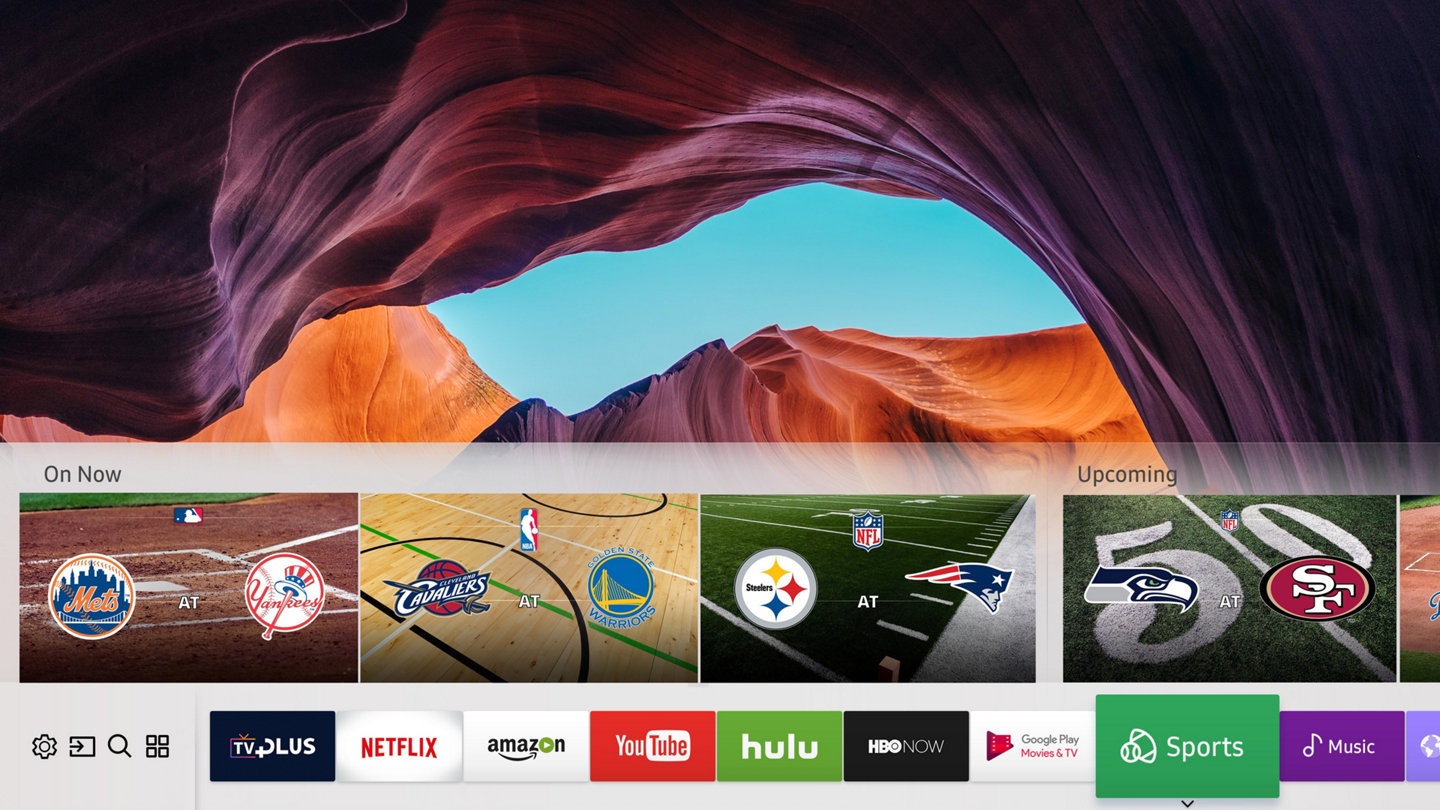
Smart TV (Eden 2.0)
Over the past couple of TV seasons Samsung has managed to mold its once confusing Tizen-based Eden smart TV system into one of the TV world’s best interfaces. The home menu, for starters, takes up pleasingly little on-screen real estate, meaning you can keep watching TV while you use it.
It’s now simplicity itself to customize the content link icons that get prioritized on the home screen too, and the Apple TV-like way a second layer of icons opens up to deliver contextual links related to the app you’ve selected on the bottom row works superbly.
The MU6400 benefits from the TV world’s most effective voice control system. You can get to almost any feature - even the more high-end picture calibration tools - via just a word or two spoken into the button-lite ‘smart’ remote handset.
The MU6400T can auto-detect source equipment connected to its HDMIs, too, so that you can control it via the TV’s smart remote.
Clever though this feature is, it failed to recognize connected Oppo or Panasonic 4K Blu-ray players. Also, trying to control some relatively complex connected equipment when you’ve only got the limited amount of buttons available on the smart remote can be excessively complicated.
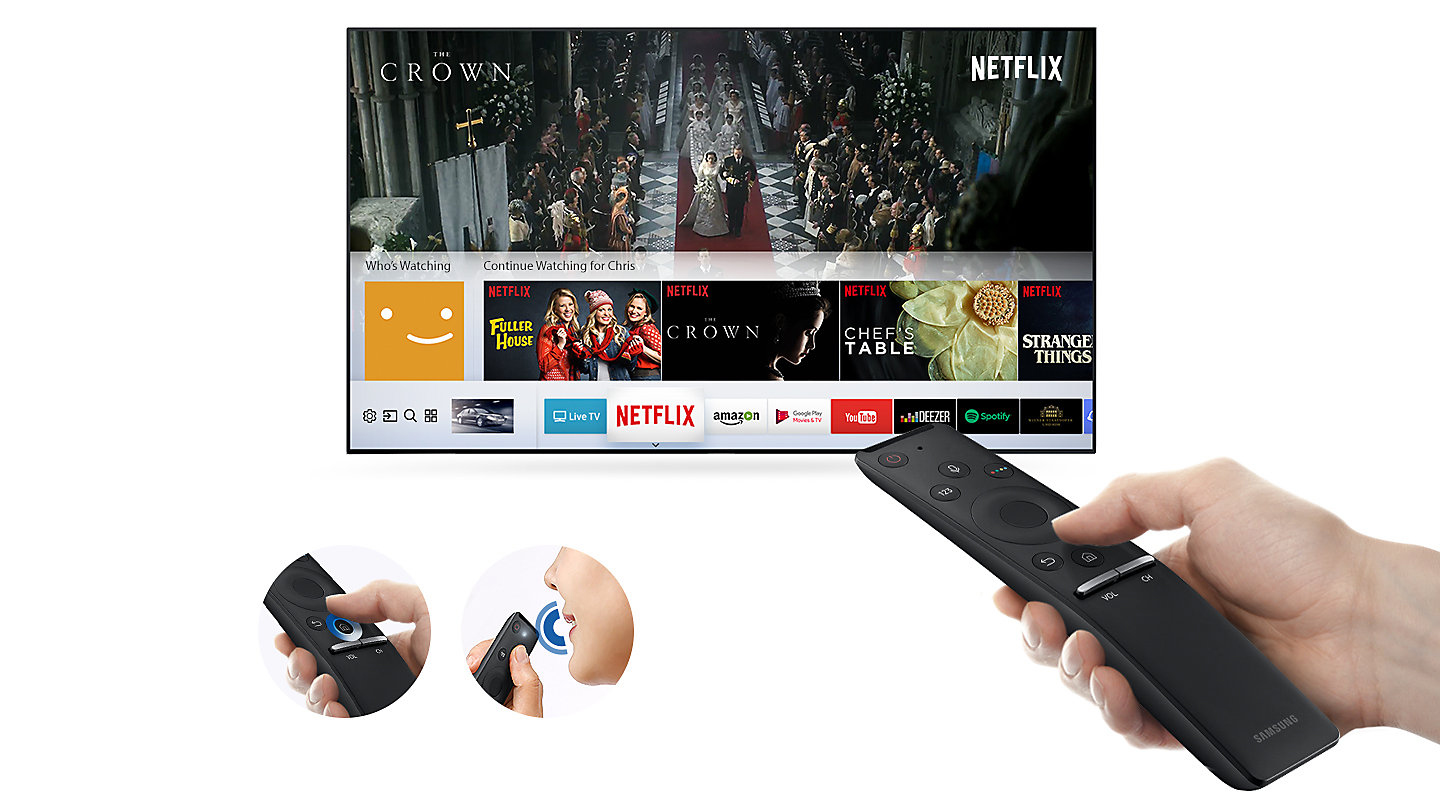
Samsung’s coverage of the key online video content services is now strong. As well as 4K HDR versions of Netflix, Amazon and YouTube, there’s Now TV, plus the catch-up services for all of the UK’s main four terrestrial broadcasters.
It's worth noting that although the Amazon and Netflix apps don’t support those services’ Dolby Vision HDR streams; Samsung doesn’t support Dolby Vision with its TVs, sticking instead with the normal HDR10 industry standard streams and its own new HDR10+ system.
HDR10+ does something similar to Dolby Vision in that it adds a layer of extra scene by scene information to a core HDR10 stream to help TVs present the images better. So far, though, while Amazon has committed to supporting HDR10+, no watchable content has appeared.
Smart TV TL;DR: Samsung’s smart TV platform is now easy to follow and customize, pleasingly economical with its menu designs, and partnered with a uniquely effective voice control system.

HD/SDR Performance
The MU6400 is ridiculously good with the HD and SDR content most households spend the vast majority of their time watching.
Contrast, for instance, is especially superb. Black levels look natural and deep at one end of the spectrum, while bright elements look dynamic and punchy. There’s hardly any evidence of backlight clouding from the edge-based LED lighting system, despite the TV only supporting whole-frame dimming (essentially a dynamic contrast system) rather than local dimming.
Also impressive is the amount of shadow detail the panel retains in the darkest corners of SDR pictures. This is down, presumably, to the quality of Samsung’s confusingly named UHD Dimming system, which breaks the image into thousands of separate zones for more accurate assessments when calculating the optimal frame by frame picture settings.
Colors look natural and full of detail and subtlety, and Samsung’s upscaling processing does a very strong job for such an affordable TV of upconverting HD resolution sources to the TV’s native 4K resolution. More detail and sharpness is added without nearly as much fizzing noise and stressed-looking edges as we used to see with Samsung’s upconversion systems.
Unusually for such an affordable TV, the UN49MU6400 even carries a system for turning SDR into HDR. Samsung isn’t the only brand to support this feature, but it’s arguably the only brand that’s managed to make it work well.

The so-called ‘HDR+’ system introduces much more HDR-like brightness and color intensity into SDR pictures than any rival SDR-to-HDR conversion engine I’ve seen to date. But crucially it does this without making the new brightness peaks look flared out, or the new colors look garish and forced.
If we were being picky, upconverted skin tones can look a bit peaky, as the boost in luminance sometimes makes compression noise in dark areas more obvious and sometimes the image feels a bit unbalanced. Naturally the upgraded images are no longer accurate to their original Rec 709 colour standard either. We can still readily imagine, though, many users deciding to stick with HDR+ for most if not all of their SDR viewing.
With the UN49MU6400 also doing an excellent job of handling motion and delivering an exceptionally low input lag score of 13ms when using its Game picture preset, really the only niggle we have with HD/SDR playback is that black levels and color saturations both start to reduce if you have to watch the TV from an angle of more than 20-25 degrees.
HD/SDR Performance TL;DR: The MU6400’s contrast, color, impressive processing and underlying sharpness combine to deliver a pretty much exemplary HD/SDR performance. The optional SDR to HDR conversion system is way better than expected, too.
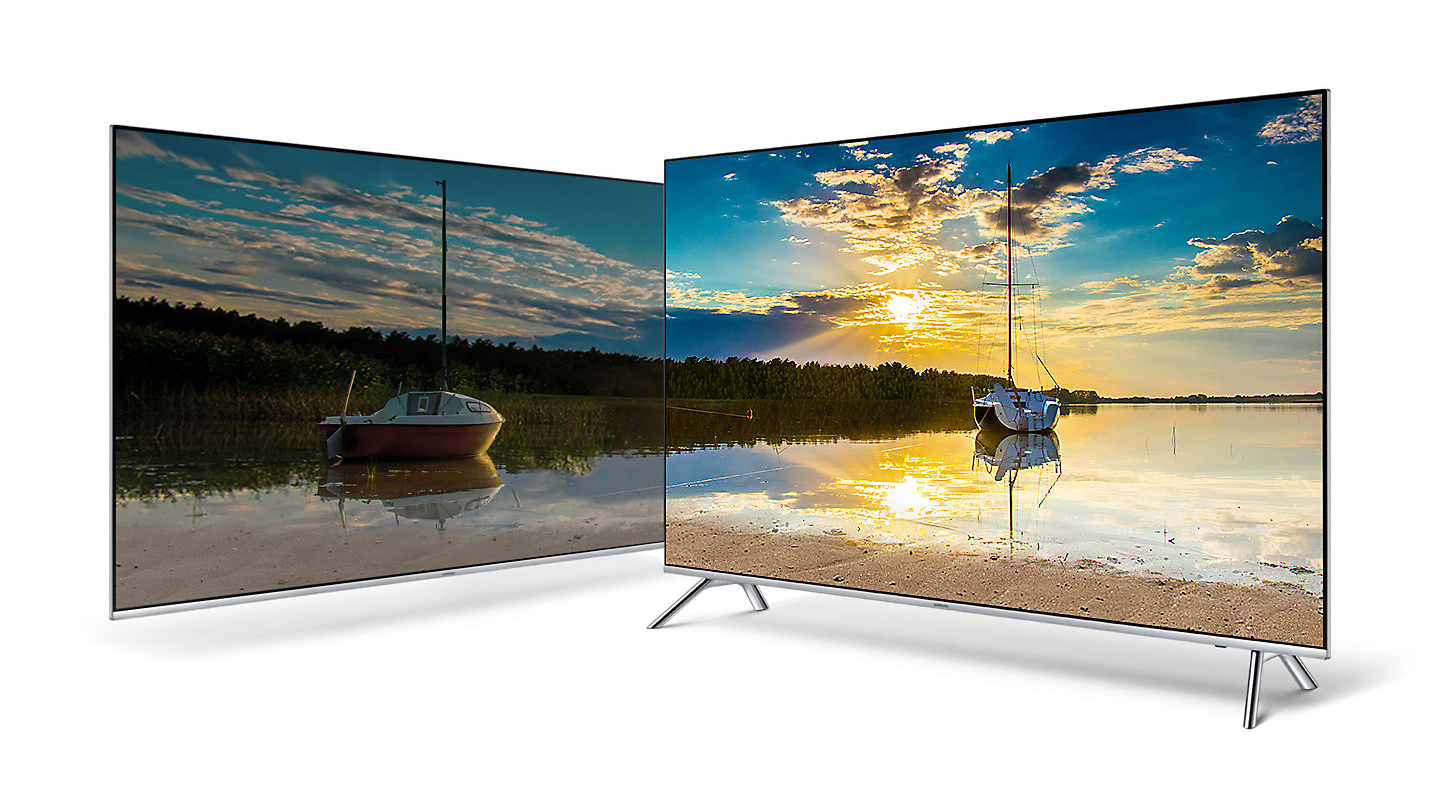
4K/HDR Performance
While the UN49MU6400 is impressive for its money with SDR content, it’s with HDR content that it really stands out from the pack.
The main reason for this is its brightness. Samsung claims it’s capable of hitting around 1000 nits of light output over small highlights – a claim backed up by our own measurements of around 700 nits delivered from a 10% of the screen size white HDR window. Most rivals at this price point struggle to get over 500 nits, and Samsung’s advantage in this key HDR area is immediately apparent.
Bright, contrast-rich HDR titles such as the Guardians Of The Galaxy Vol. 2 4K Blu-ray instantly look more vibrant, dynamic and ‘opened up’ on the MU6400 than they do on any other sub-$1,000/£1,000 TV.
Small light peaks such as lights and displays in the various space craft look spectacularly intense. Exterior shots look brighter and more life like. Colours look both richer and more subtle, as the extra light driving them out lets you see more subtle tone shifts and blends. (Despite this 49-inch screen only being an 8-bit panel rather than the 10-bit examples used in all the bigger MU6400s including the 55- and 65-inch sizes.)
In simpler terms, the UN49MU6400 gives you a genuine HDR experience, rather than the brightness-compromised halfway house you might expect to get at this price point.
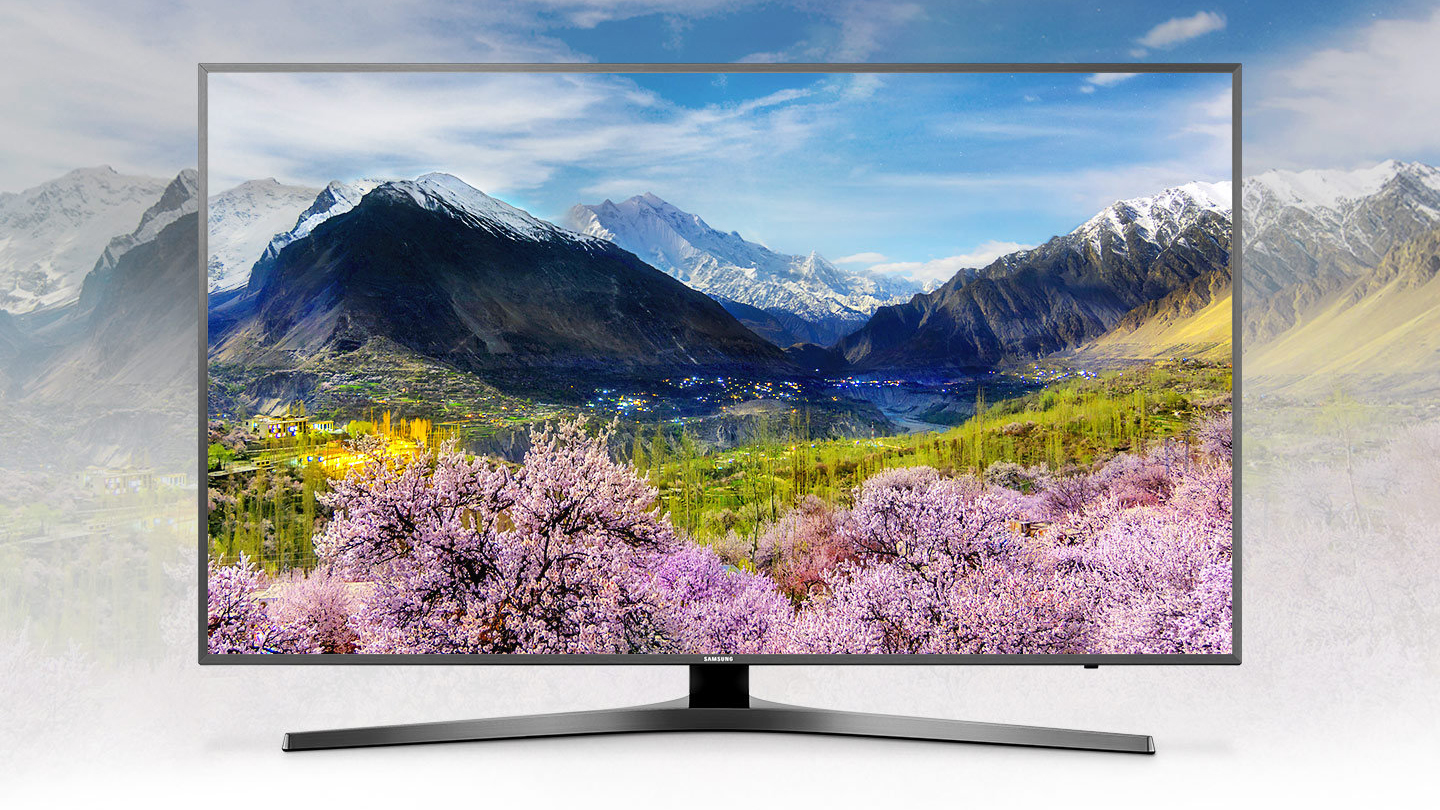
Inevitably there is one price to pay for achieving so much brightness from an edge-lit LCD TV with no local dimming: Watch an HDR scene that features bright objects against a dark backdrop and the dark areas don’t look all that dark. There’s a noticeable grey mist hanging over them, as the UN49MU6400 is forced to find an LED output compromise that does some sort of justice to HDR’s full light range potential.
Before anyone gets too despondent about this, though, the UN49MU6400 actually consistently achieves deeper black levels than we'd have expected from its backlight arrangement. In fact, while there can certainly be some greyness, it’s actually less pronounced than it can be on some much more expensive TVs, as well as some similarly priced TVs that don’t push for so much HDR-friendly brightness.
More expensive televisions that use local dimming to output different amounts of light from different sections of their LEDs can usually hit deeper black levels than the UN49MU6400. However, such local dimming often causes distracting bars of light to run the full height or width of the picture around stand-out bright objects. This is not a problem here.
Nor does it suffer from general backlight clouding, even in the corners. In other words, while the UN49MU7000’s dark scenes might not hit the deepest blacks in the TV world, at least the black levels it does hit look uniform and immersive. Unless, as mentioned earlier, you have to watch from much of an angle.
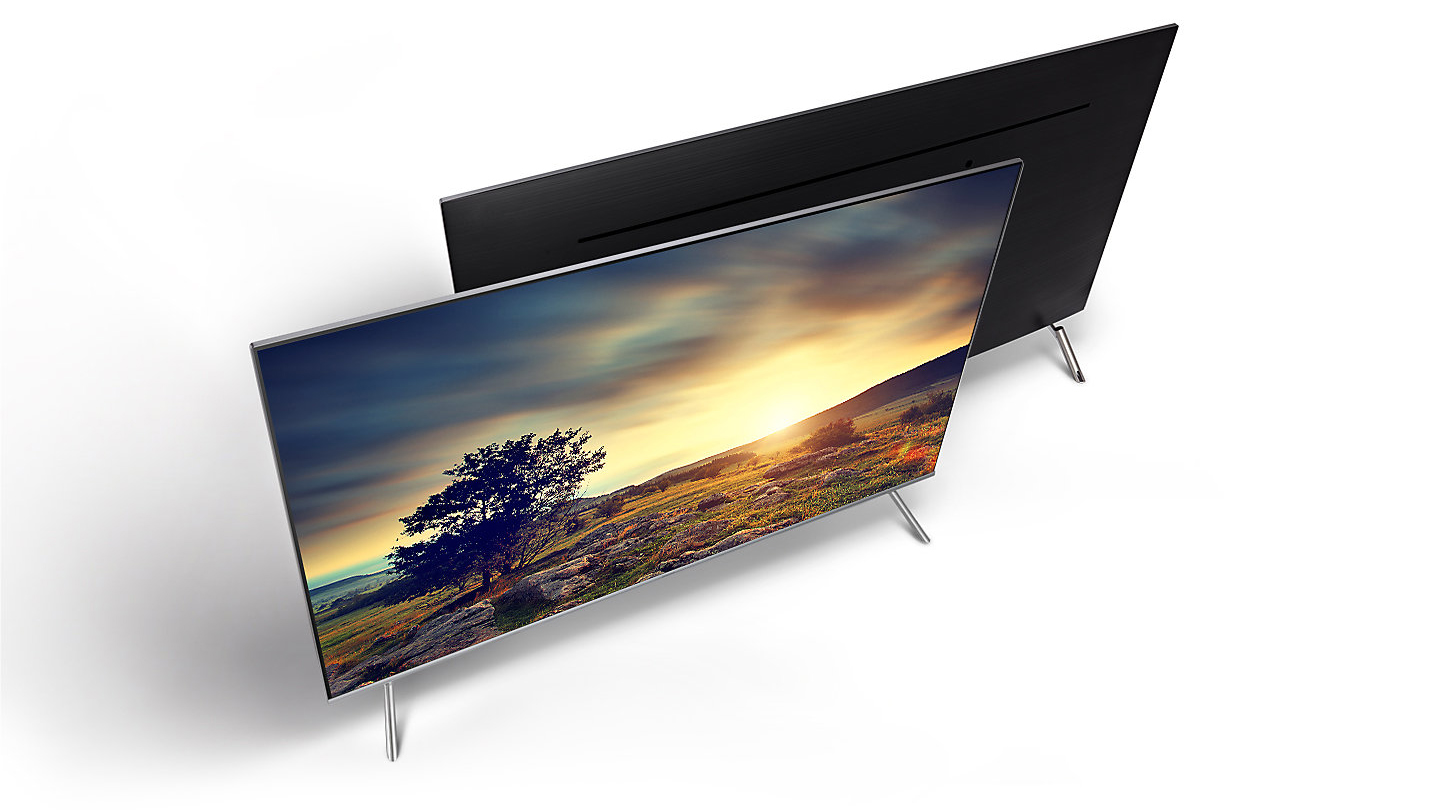
The UN49MU6400 makes its 4K resolution count handsomely too. While it obviously doesn’t benefit as much from having so many extra pixels as a much bigger screen might, even from a normal viewing distance you can see more detail, texture and, especially, depth when it’s playing high quality native 4K content than you would get with an HD screen.
Its motion processing is good enough to maintain the sharpness pretty well when you’re watching sport or action scenes. Just bear in mind that you’ll get the best results if you use the Custom motion setting with judder set around four; anything more powerful than that can cause unwanted processing side effects.
One last positive point to make about the UN49MU6400’s sharpness with 4K content is that it looks nice and natural right out of the box. Samsung’s past tendencies to over-sharpen 4K images to the point they become gritty and stressy have thankfully been booted into touch.
4K/HDR Performance TL;DR: Thanks to a strong brightness and contrast performance, the UN49MU6400 delivers better HDR images than any other TV in its class.
Sound
The UN49MU6400’s slender frame and relatively light-weight feel don’t seem compatible with a powerful audio performance. So we were pleasantly surprised to hear it delivering a really quite potent, open-sounding soundstage, even with full-on action movies.
There’s even a solid stab at injection genuine bass into proceedings, while the sound projects far and wide without becoming incoherent.
Details start to get a bit squeezed if you push the volume to neighbor-bating levels, but even then there’s no real sense of harshness or distortion.
Other panels to ponder
The biggest direct rival to the UN49MU6400 is the slightly better Sony 55XE8596 (a UK exclusive, unfortunately). This gives you six inches more picture, as well as exceptionally good black levels and colors. However, it costs £250 more, and is only just over half as bright as the Samsung model, so its HDR images are more subdued. US customers should look at the TCL 55P607 for cheap 4K HDR.
Other than that, probably your best bet would be to step up to one of Samsung’s own MU8000 or MU9000 models, since these both use more advanced Ultra Black panel technology to deliver deeper black levels, as well as more powerful motion processing.
Verdict
Inevitably for its price, the UN49MU6400/UE49MU7000T is not perfect. High contrast scenes can look slightly grey, there aren’t as many color tones as you'd get with a more expensive 10-bit panel, and viewing angles are limited.
However, no other TV we’ve tested to date that sits around this price point is able to do nearly as much justice to native 4K resolution or, especially, high dynamic range technology as this one does. So, if $700/£1,000 is as far as your budget can stretch but you want to get as much impact from the latest TV technologies as possible, the 49MU6400 should be right at the top of your list.
- Don't miss our guide to the best 4K TVs of 2017

John has been writing about home entertainment technology for more than two decades - an especially impressive feat considering he still claims to only be 35 years old (yeah, right). In that time he’s reviewed hundreds if not thousands of TVs, projectors and speakers, and spent frankly far too long sitting by himself in a dark room.
